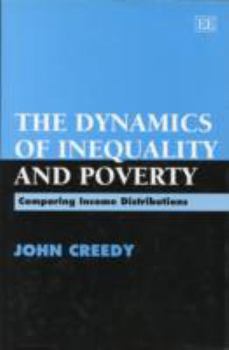The Dynamics of Inequality and Poverty: Comparing Income Distributions
The book begins with an introduction to the measurement of inequality and poverty, stressing the role of value judgements. The following six chapters deal with cross- sectional comparisons, including the analysis of a labour market model of income distribution, the choice of transfer system, marginal indirect tax reform, and the distributional effects of inflation. The next seven chapters are concerned with dynamic aspects of income distribution. These examine the complex relationship between cross-sectional and lifetime distributions, relative income mobility, and the effects of income mobility on temporary and permanent poverty.
The Dynamics of Inequality and Poverty will be essential reading for students and scholars of public sector economics, welfare economics and social economics, along with those directly concerned with policy formulation.





